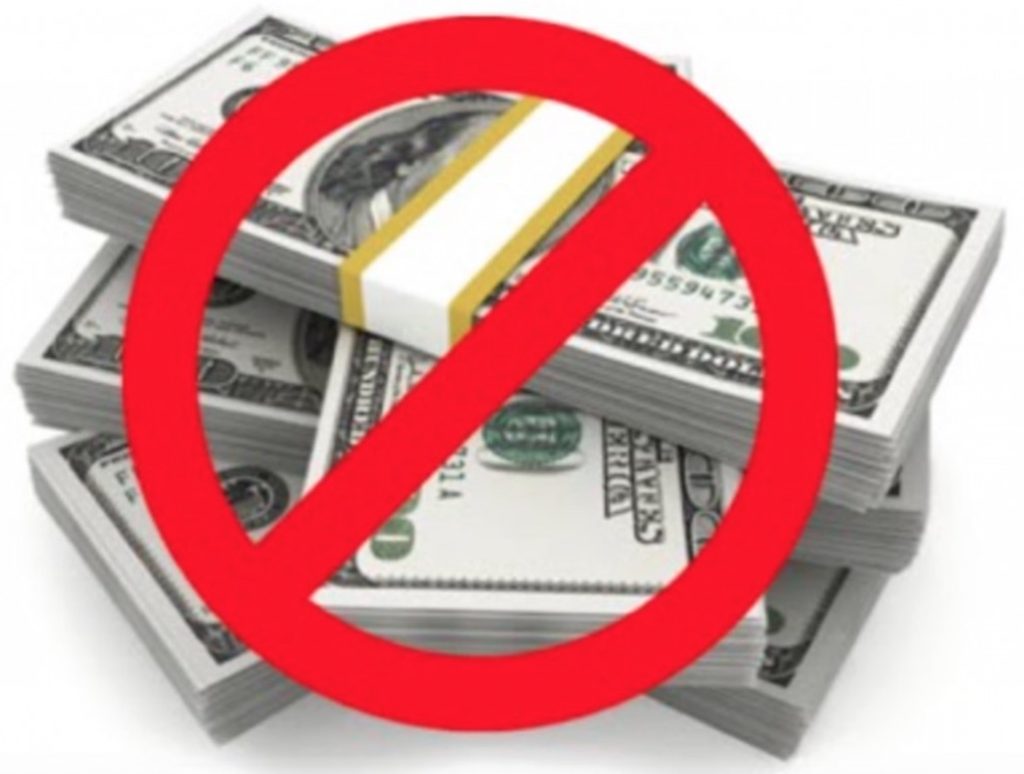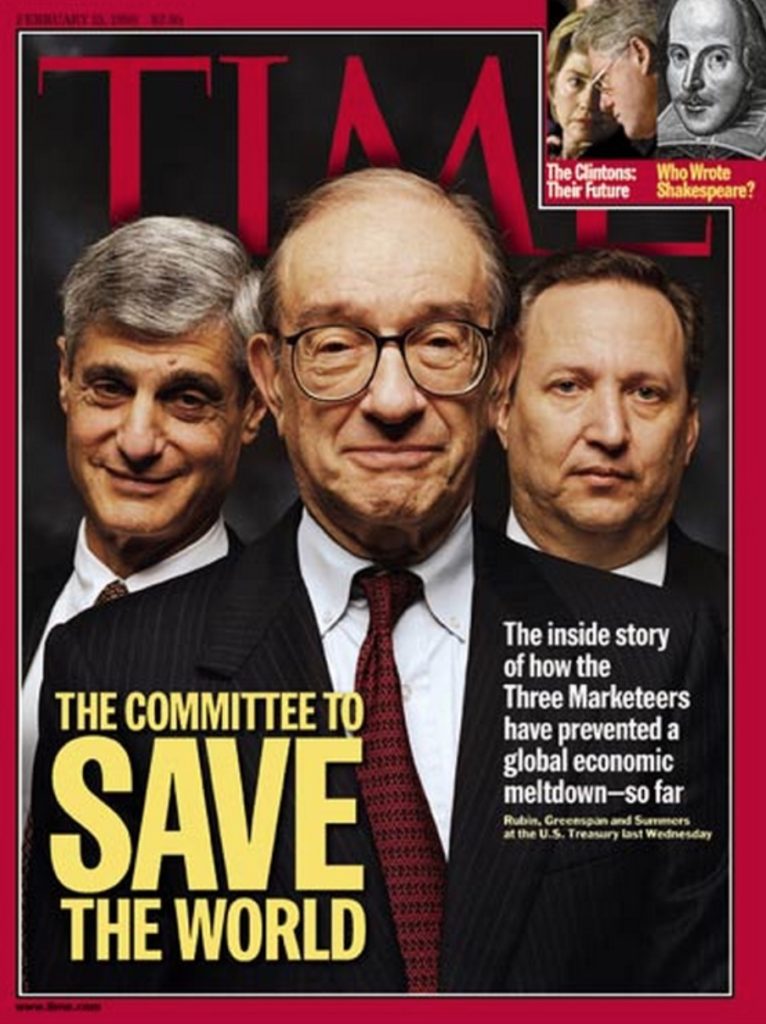
I cannot overstate the significance of today’s New York Times editorial board endorsement of the elitist scheme to ban large denomination cash from public circulation. This is the latest example of the editorial board putting the interests of the establishment ahead of the citizenry, while at the same time employing a nonsensical argument to support its position which channels emotion rather than logic.
This public support for a de facto cash ban by the New York Times must not be viewed in a vacuum. It should be read in conjunction with its recent absurd endorsement of Hillary Clinton in the Democratic primary. I highlighted that previously published piece of fiction in the post, A Detailed Look at The New York Times’ Embarrassing, Deceitful and Illogical Endorsement of Hillary Clinton. Here are a few excerpts:
The New York Times’ endorsement of Hillary Clinton against Bernie Sanders in the Democratic primary consists of an unreadable, illogical piece of fiction. In this post, I will critique the paper’s position in detail, but first I want to take a step back and explain to people what I think is going on in the bigger picture.
In its endorsement of Hillary, the New York Times editorial board did such a sloppy job I can’t help but think it may have done permanent damage to its brand. Upon reading it, my initial conclusion was that the editorial board was either suffering from Stockholm syndrome or merely concerned about losing advertising revenues should they endorse Sanders. Then I thought some more and I realized my initial conclusions were wrong. Something else is going on here, something far more subtle, subconscious and illuminating. The New York Times is defending the establishment candidate simply because the New York Times is the establishment.
One of the biggest trends of the post financial crisis period has been a plunge in the American public’s perception of the country’s powerful institutions. The establishment often admits this reality with a mixture of bewilderment and erroneous conclusions, ultimately settling on the idea people are upset because “Washington can’t get anything done.” However, nothing could be further from the truth. When it comes to corruption and serving big monied interests, both Congress and the President are very, very good at getting things done. Yes it’s true Congress doesn’t get anything done on behalf of the people, but this is no accident. The government doesn’t work for the people.
With its dishonest and shifty endorsement of Hillary Clinton, I believe the New York Times has finally come out of the closet as an unabashed gatekeeper of the status quo. I suppose this makes sense since the paper has become the ultimate status quo journalistic publication. The sad truth is the publication has been living on borrowed time and a borrowed reputation for a long time. Long on prestige, it remains very short on substance when it comes to fighting difficult battles in the public interest. Content with its position of power and influence within the current paradigm, the paper doesn’t want to rock the boat. What the New York Times is actually telling its readers with the Hillary Clinton endorsement is that it likes things just the way they are, and will fight hard to keep them that way. It is as much a part of the American establishment as any government institution.
What we learned from that piece was that the New York Times was frantically working to protect and support the political establishment from an insurgent Sanders surge. Similarly, what we see in today’s article is the same editorial board scrambling to protect the financial and economic establishment. So why do I come to such a conclusion? Let me explain.
Central banks understand that everything they’ve done so far has failed, so they are becoming increasingly desperate. Part of this desperation has translated into a negative interest rate policy (NIRP) in various parts of the world. The only problem with aggressively implementing NIRP is that citizens can pull their money out of the banking system in response to being charged a percentage of deposits by the criminal, bailed out banks. If this happens, negative interest rates can’t “work” (not that they would boost the economy anyway).
The above is obvious. The correlation between central banks launching a negative interest rate policy and global “leaders” suddenly becoming concerned about criminals using cash is no coincidence. The New York Times editorial board cannot be so financially illiterate that they don’t know this. As such, the only logical conclusion one can reach is the editorial board is intentionally attempting to lead its hapless readers off a cliff into monetary fascism.
So let’s get into. Here are a few excerpts from the clownishly stupid piece of propaganda titled, Getting Rid of Big Currency Notes Could Help Fight Crime:
Few Europeans use the 500-euro note, and most Americans rarely encounter the $100 bill. Yet hundreds of millions of these notes are in circulation around the world, where they are often used by drug cartels, corrupt politicians, terrorists and tax cheats to evade law enforcement. That’s why officials in Europe and elsewhere are proposing to end the printing of high-denomination bills.
Wait, the New York Times editorial board is suddenly worried about corrupt politicians? Didn’t it just endorse Hillary Clinton?
Getting rid of big bills will make it harder for criminals to do business and make it easier for law enforcement to detect illicit activity. Consider this: a stack of 500-euro notes worth $1 million weighs just five pounds and can be carried in a small bag, whereas a pile of $20 bills worth the same amount would weigh 110 pounds and would be much more difficult to move around, according to a recent paper from Harvard’s John F. Kennedy School of Government.
Brilliant. I suppose we’re supposed to believe that criminals are so stupid they won’t figure out a way around the cash ban when trillions of dollars are at stake. Not to mention the fact that drug cartels and terrorists systematically use the banking system to launder billions and no executives ever go to jail. If anything, any cash ban will merely ensure the banks obtain a total monopoly on criminal business.
Lawrence Summers, the former Treasury secretary and former adviser to President Obama, has argued that the United States should get rid of the $100 bill; about 65 percent of these bills are held outside the country, according to a study published by the Federal Reserve. But that change could be disruptive because the $100 bill is used widely overseas for legitimate purposes, too. And as long as the E.C.B. continues to print 200-euro and 100-euro notes, criminals could switch to those bills. That’s why such efforts should be coordinated internationally.
Really New York Times? Larry Summers? This man’s brain is like an economic plague that the world can’t seem to extricate itself from. Using him to support a cash ban speaks volumes as to where these people are coming from.
On the other hand, he did save the world once, so perhaps he can do it again.

Now back to the New York Times…
Critics who oppose such changes say the big bills make it easier for people to keep their savings in cash, especially in countries with negative interest rates. Some people also prefer not to conduct transactions electronically because they fear security breaches. But these are relatively minor burdens compared with the potential benefits of reducing criminal activity and tax evasion.
This is the economic version of “you need to trade liberty for safety,” which has been used by the U.S. security state to trample upon civil liberties since 9/11. Again, the fact the New York Times is suddenly using this argument to ban cash tells you all you need to know about where the editorial board’s allegiance lies, and it’s not with the American people.
The banking system is where the real criminal activity seems to happen, and the fact no bank executives are ever jailed for such offenses proves that the government could care less about cracking down on crime. This is all about shoving the public into a digital financial ghetto.
There is no need for large-denomination currency. Britain’s top bill is the 50-pound note ($72), which has been perfectly sufficient. The United States stopped distributing $500, $1,000, $5,000 and $10,000 bills in 1969. There are now so many ways to pay for things, and eliminating big bills should create few problems.
The New York Times editorial board has once again exposed itself as a dangerous and duplicitous organ of entrenched established interests against the public. It must be exposed.
For related articles, see:
“Non-Official Cover” – Respected German Journalist Blows Whistle on How the CIA Controls the Media
This is How the U.S. Government Convinces a Newspaper to Kill a Story
Editor in Asia Leaves Bloomberg News Citing Censorship
In Liberty,
Michael Krieger
Donate bitcoins: 35DBUbbAQHTqbDaAc5mAaN6BqwA2AxuE7G
Follow me on Twitter.



Remember this axiom when dealing with these people,
“The more noble the language, the more nefarious the legal instrument.”
In some sense this is obvious, but in others it is opaque because what we mean by “establishment” is not very well defined. The Turks use the phrase “Deep State”, the Italians “Political Class”, the old Irish phrase was “Acendancy”, and many also use the terms elites/”the man”/government/etc.
Part of the problem here is the lack of clear definitions. Without one, organisations like the New York Times can claim to be independent when in reality there were soviet newspapers with more independence from government party lines.
But I feel that the largest problem in defining terms to descibe what papers like the NYT are, or what the Fed is, or what senior economic schools/universites are, is that we have bias, a trained bias, to rigidly separate persons and corporations to the “public” and “private” spheres. The NYT is a private newspaper, ergo it is not a part of the government/establishment/etc, as the Times will readily attempt to claim.
In reality such artifical distinctions fall apart under the reality of personal networking, political influence, institutional connections and historical influences. There is no Public and Private. There is a spectrum of statuses, ranging from almost wholly Public, to nearly almost Private, with no completely extreme examples. The best examples of this are the Banks. Any claims that Banks are private companies are by now clearly absurd. They recieve more government funding, and exert more influence, that many major government departments. Similarly an organisation like the NYT cannot be viewed as being as private or independent as a local town newsletter, or the likes of, say, Infowars.
There is a complex interplay of connections and privileges which could be used to define what “establishment” means in concrete terms, but our entire theory of civilisation in effect recoils from this, and lives in an intellectual fantasy land where the NYT is to be viewed as somehow independent of the State, despite its evolution into a modern day Pravda for the western bloc. And without a clearly defined theory and terminology of what it means to be “establishment”, “ascendancy”, “deep state”, the NYT, the banks, the accountancy firms, the economists and their ilk will always be able to slink back into this fantasy sphere where they can deny both their responsibilities, and their duties to wider society.
We need to stop pretending that deep, mutual, and very often corrupt links between the state and limited liability organisations.